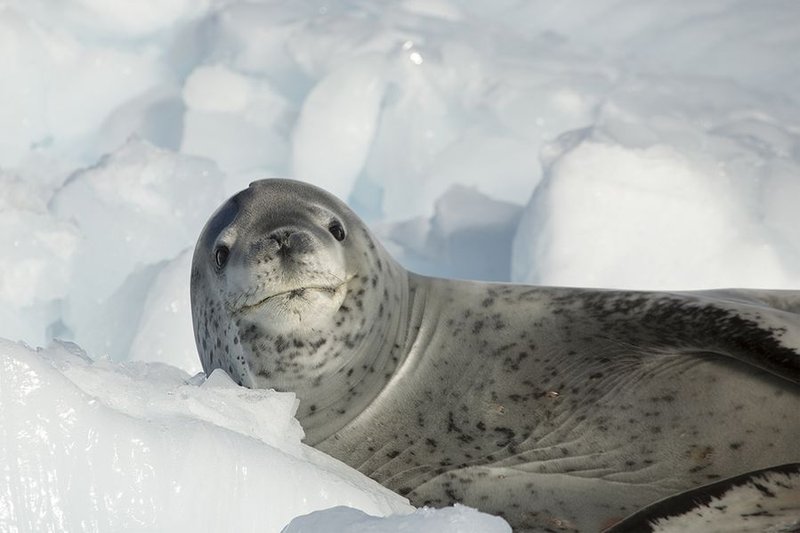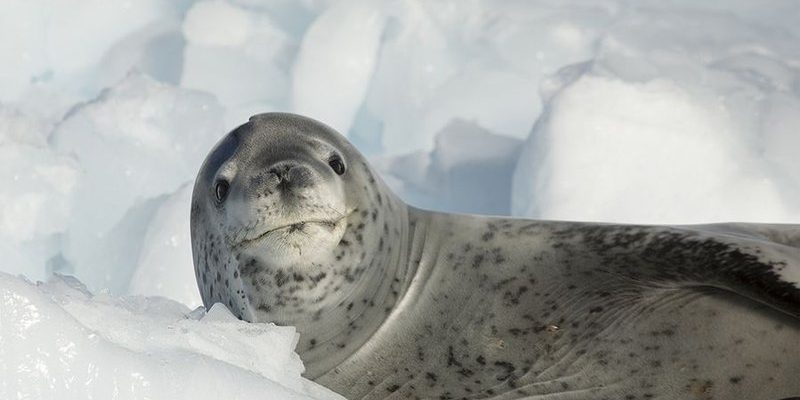
Leopard seals are often overshadowed by their more famous counterparts, like the adorable sea lions or the massive elephant seals. Yet, these solitary animals have a unique charm and an intriguing lifestyle that makes them well worth learning about. So, grab a warm drink, and let’s dive into some truly amazing facts about the leopard seal!
1. A Unique Appearance
The leopard seal is easily recognizable, thanks to its *distinctive coat*. Their fur is grayish with dark spots, resembling the skin of a leopard—hence the name. Measuring up to 10.5 feet long and weighing between 440 and 1,000 pounds, these seals are among the largest in the Antarctic region.
Here’s the thing: their long, slender bodies make them incredibly agile in the water. They can swim at speeds of up to 25 miles per hour, which is quite impressive considering their size. When you see one gliding through the icy waters, it’s hard not to be in awe of their elegance.
2. A Carnivorous Diet
Unlike many seals that primarily feed on fish, leopard seals have a more varied and carnivorous diet. They’re known to feast on *krill, fish, and even other seals*. In fact, they’ve been observed hunting Gentoo penguins with surprising agility.
Imagine this: a leopard seal lying in wait below the ice, watching a penguin hop along the surface. In a flash, they launch from the water, grabbing the unsuspecting bird with their powerful jaws. It’s both thrilling and a bit daunting to consider how adept these seals are at hunting.
3. Solitary Predators
Unlike other seals that often hang out in large groups, leopard seals are mostly solitary. You might think of them as the *lone wolves* of the sea. They prefer to spend time alone, hunting and lounging in their icy habitats.
But why do they prefer solitude? It could be that hunting alone helps them maintain their fierce independence, allowing them to control their territory more effectively. They’re not really into sharing, especially their food!
4. Vocal Communication
Leopard seals are surprisingly vocal. Their calls can be quite haunting, echoing through the icy waters. They use a variety of sounds to communicate, from growls and barks to trills and honks.
You might be wondering how this helps them. Well, these vocalizations play a crucial role, especially during mating season. Males and females use these sounds to attract a mate and communicate their presence to one another. It’s like a symphony beneath the waves!
5. Habitat Preferences
Leopard seals thrive in the *frigid waters* of the Antarctic and sub-Antarctic regions. They’re particularly fond of areas packed with sea ice, which they use as a platform for resting and hunting.
When it comes to their habitat, the presence of sea ice is vital. During harsh winters, they can often be spotted lounging on floating ice floes, soaking up the sun. These ice formations are not just a home; they serve as a perfect hunting ground.
6. Threats to Their Existence
Despite being powerful predators, leopard seals face several threats. Climate change is a significant concern, as it affects the ice they rely on for hunting and resting. As ice melts, their hunting grounds diminish, impacting their ability to find food.
Additionally, hunting by humans—though now less common—has historically posed a threat to their populations. The disruption of their natural habitat due to pollution and shipping activities also impacts their numbers.
7. Reproductive Habits
Leopard seals have a unique way of reproducing. Females typically give birth to a single pup every year, usually during the Antarctic summer months. After a gestation period of around 11 months, the pup is born on the ice, weighing about 50 pounds.
What’s interesting is how quickly pups become independent. Within a few weeks, they start to swim and dive, learning to hunt with their mother’s guidance. This fast-paced learning helps them adapt to their solitary lifestyle later on.
8. Role in the Ecosystem
Leopard seals play a critical role in the *marine ecosystem*. As top predators, they help keep the populations of their prey—like krill and fish—in check. This balance is essential for maintaining healthy ocean ecosystems.
You might not realize it, but the health of the Antarctic ecosystem affects the entire planet. By controlling prey populations, leopard seals contribute to the broader health of ocean environments and the species that inhabit them.
9. Cultural Significance
In some indigenous cultures of the Arctic, leopard seals hold cultural significance. Communities that depend on marine life often view them as symbols of strength and resilience.
Stories and legends about leopard seals can be found in the folklore of these communities, reflecting their profound connection to the sea and the creatures that inhabit it. This cultural aspect adds another layer to our understanding of these fascinating animals.
10. Conservation Efforts
Many organizations are working hard to protect leopard seals and their habitats. Conservation efforts focus on monitoring populations, reducing human impacts, and combating climate change.
You might find it encouraging that people worldwide are taking action to ensure future generations can appreciate these incredible animals. By supporting such initiatives, we can contribute to the protection of leopard seals and their icy homes.
In conclusion, the leopard seal is more than just a striking animal; it embodies a delicate balance in its ecosystem. Understanding and appreciating these fascinating creatures is vital, especially as we face a changing climate and human activities that threaten their survival. So, the next time you hear about leopard seals, remember their unique role in the ocean and what we can do to help protect them.

